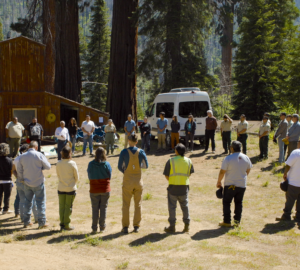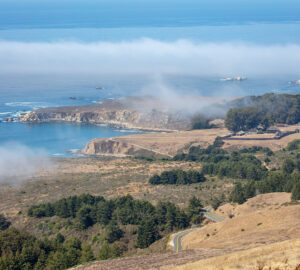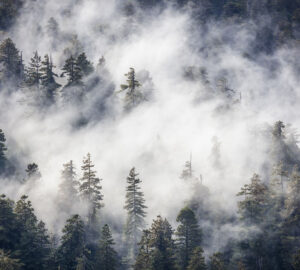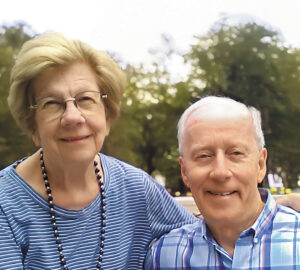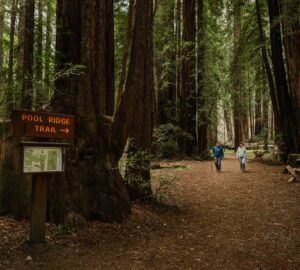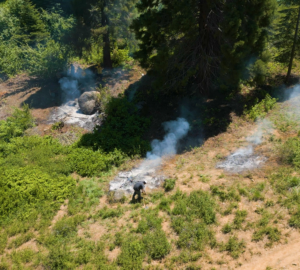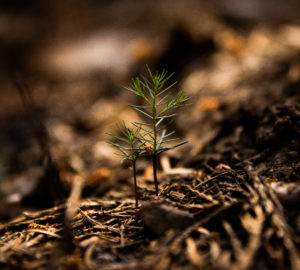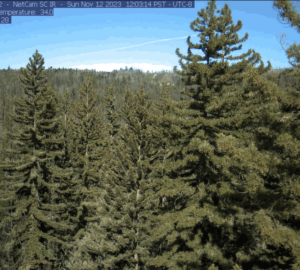Respect for Big Sur’s ancient trees inspires Esselen Tribe members to share their traditional stewardship knowledge
Tom Little Bear Nason, chairman of Big Sur’s Esselen Tribe of Monterey County, describes his tribe’s long-standing relationship with redwoods. He’s working with the area’s non-native communities to integrate cultural burn strategies into land management practices that will protect the forest from catastrophic wildfires.
Video by Michele Bigley.
“Close your eyes and take a deep breath,” says Tom Little Bear Nason, chairman of Big Sur’s Esselen Tribe of Monterey County. He cranes his neck toward two thick, old-growth coast redwoods lining the Bixby Creek tributary leading to Pico Blanco, a sacred mountain for his tribe, and releases a chant from deep in his belly. His abalone shell bear-shaped necklace bounces with his breath. Soon his melody combines with a jay’s song, the river’s thick, percussive flow and the soft breeze clapping the Douglas-fir needles sloping uphill. Little Bear raises his voice to say, “We always stop to give thanks to these two giant grandmother trees.”
Over the last century, the Esselen Tribe has protected the Ventana Wilderness from logging, fire, and development with, as Little Bear quips, “A lot of prayers, sister. Talking to trees, rocks, ancestors, and doing the work we were trained to do.” Now, in an effort to amplify their stewardship, he is judiciously sharing his ancestral knowledge with non-native community members with hopes that together they can protect this sacred forest in the southern end of the coast redwood range.
Though he’s called Little Bear, Esselen’s tribal leader is a hulking man who exudes power. He walks with a tall staff topped with a carved, wooden wolf. In boots and a cowboy hat, with rabbit skin and turtle shell pouches slung across his shoulders, it’s easy to see why many in the Big Sur and Carmel Valley community consider him a force of nature. To be in his presence feels like a gift. Gentle and playful like a cub, he smiles easily and exudes warmth, and his unlimited generosity stems from a deep belief that all people must come together to heal the wound we’ve inflicted on our mother Earth.
Many tribal members don’t agree. They are angry about centuries of suppression of Indigenous practices, which Little Bear acknowledges, adding that scientists and westerners now come begging for traditional ecological knowledge to then plagiarize that very wisdom.
“I think the benefit of sharing far outweighs not sharing,” he adds. “We are all going through healing and reconciliation, a generational trauma, triggering us to heal with all people, even those who were co-conspirators or [their] descendants. The only way to bring true harmony is to take each other by hand, like we do when we do a fire circle, and let others in. We all are Indigenous to somewhere.”
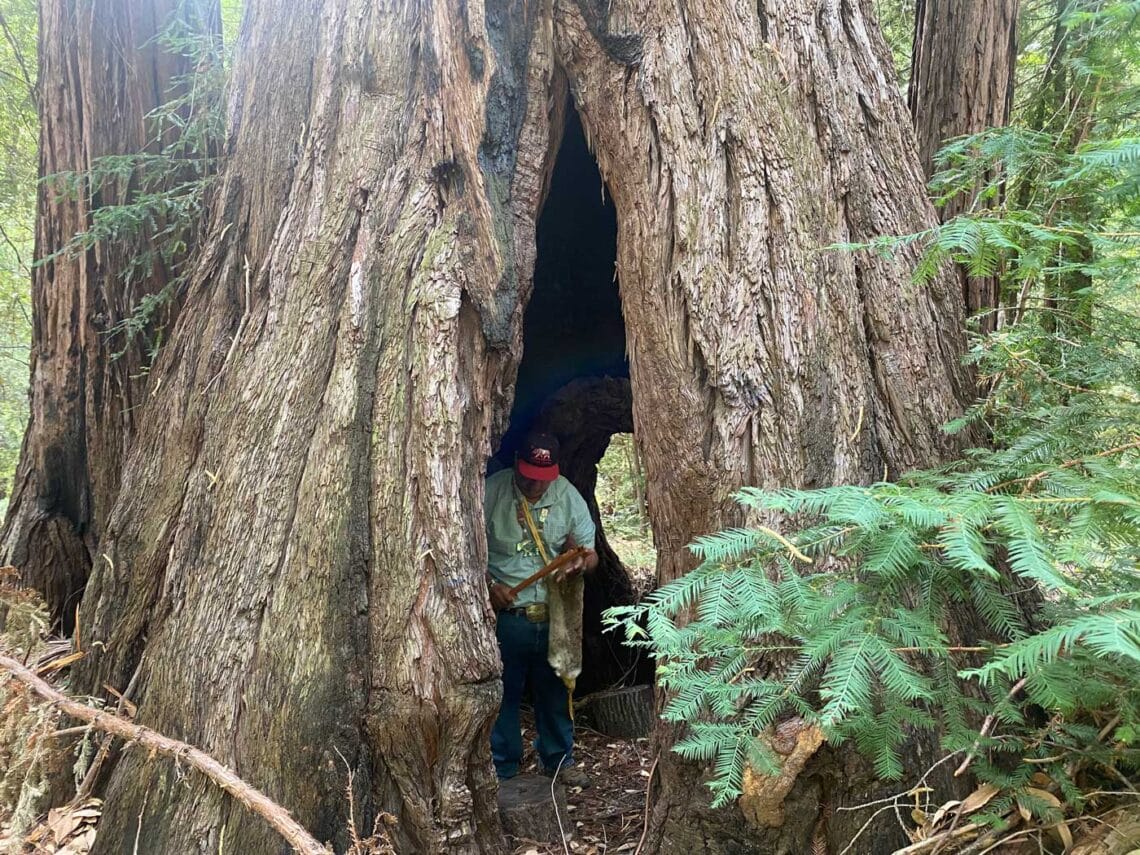
RECLAIMING THEIR LAND
Little Bear has been training for this moment since he was eight years old. By the time he was elected tribal leader, the federal government had deemed the Esselen Indians culturally and linguistically extinct. One of his first major acts was to use DNA, the legal system, and archeological data to rewrite their own history, and begin the long process of getting their land back.
“We are [as Indigenous tribes] the keepers of the allodial title, a sacred undivided trust in land and natural resources that cannot be sold, traded, or given away. The land can only pass through lineage to the next generation,” Little Bear explains. “We are generation keepers.”
Over the last seven generations, Esselen elders have continued to teach the next generation of Indigenous people that it is their sacred right to protect their land. This territory stretches from the Salinas River in the east to the Pacific Ocean in the west, and from Little Sur River to Junipero Serra Peak, and includes groves of old-growth redwoods deep in the Ventana Wilderness.
With the help of the California Truth and Healing Council, a couple generous landowners, and a handful of natural resources and outdoor adventure organizations with deeper pockets than the tribe, the Esselen community is finally getting some of their land back. In 2020, they got back 1,200 acres of ancestral land in the Santa Lucia Mountains. More recently, they received another 700 acres (the Pico Blanco Boy Scout camp), and at press time, they were in escrow for another almost 15,000 acres in Carmel Valley, where they plan to reconstruct a traditional Indigenous village and farm with an educational center for local youths.
Currently Little Bear is most enthused about the newly acquired former Boy Scout camp deep in the wilderness. Once the rough road is graded, Little Bear says he “plans to offer traditional ecological knowledge camps for all ages, colors, religions, walks of life, but primarily tribal people who have become disconnected. People must decontaminate themselves from the pollutants in our bodies and minds.” He wants to offer a place to reboot, where devices stay home, and people reconnect with nature. “Trees can communicate. When you need to express yourself, go into the forest, and these grandmothers,” he patted the soft bark of a redwood, “can help you.”
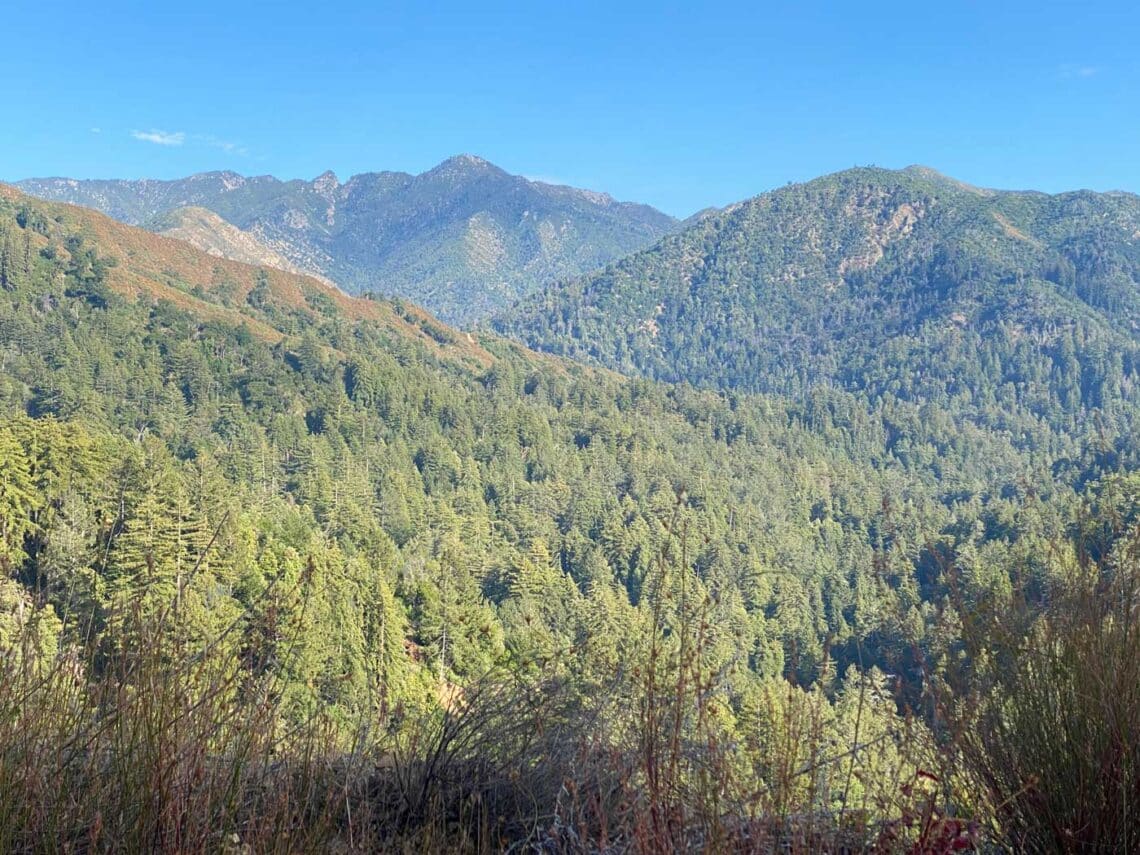
TENDING WITH FIRE
The deep-seated respect for ancient redwoods has inspired Little Bear and his apprentices to share their traditional ecological knowledge of fire mimicry with the Big Sur community. For generations, native communities have used fire to tend to the land. They generally carry fire under the trees during cooler weather to clear away brush and invasive plants so animals can more easily find sustenance such as fallen acorns, berries, and fresh greenery. Fires trim trees to make them healthier, or as Little Bear explains, “to make a stronger herd.”
But the growing intensity of wildfires, especially in Big Sur, has terrified the non-native community. Many voiced trepidation that wind will kick up the tribe’s small fires and torch entire mountains, including their homes. Understanding that the fear is real, Little Bear decided to educate his neighbors about fire. “You have to work with people. Start with a small fire on the ground and teach them how fire warms you and has power to heal. But it also has the power to kill you.”
People are listening. He and other tribal members regularly team up with California State Parks, Cal Fire and prescribed burn communities to integrate cultural burn strategies into land management practices. He hosts educational pile burns on Esselen land, demonstrating how to safely clear excess brush from property. He organizes fire ecology conferences and has visited Washington, D.C., to school congressional members on the benefits of collaborating with Indigenous communities to steward the land.
“Our work is preservation and conservation,” Little Bear says. “We don’t want to lose old-growth trees—our elders—to fire. They are fire resistant, but enough fire on them, and they will succumb. We hold trees higher than we hold ourselves, and now is the time to work together to protect them.”
This feature appears in the beautiful printed edition of Redwoods magazine, a showcase of redwoods conservation stories by leading scientists and writers, as well as breathtaking photos, and ways you can help the forest. Only a selection of these stories are available online.
Join our thousands of members today for only $25, and you’ll get future editions of our Redwoods magazine.

